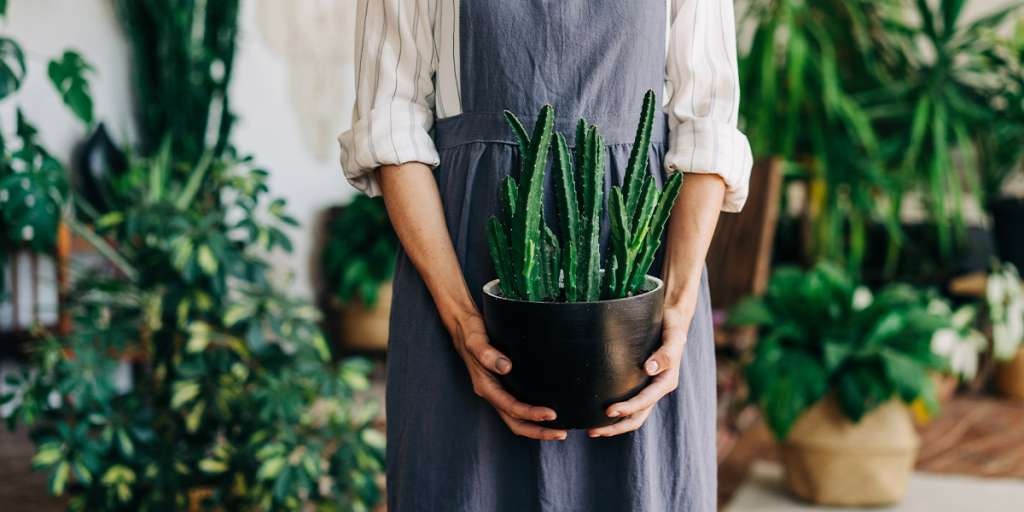Moving with Plants
Moving to a new home is exciting, but if you love plants, it can be a little challenging to take them with you. Plants are more than just decorations; they’re like members of our homes, showing the stories of care and growth. Making sure they move safely to a new place needs careful planning and a gentle touch.

Here are some key steps you can take:
- Assess Your Plants:
Before you start packing, assess the health and type of each plant. Some plants may be more delicate and sensitive to changes, while others are hardier and can withstand the moving process better. This initial assessment will help you tailor your approach to each individual plant’s needs. - Prune and Trim:
Give your plants a little haircut before the move. Pruning and trimming help reduce the size of the plants, making them more manageable for transportation. Focus on removing dead or damaged leaves, but be mindful not to cut too much, as the foliage plays a crucial role in the plant’s ability to generate energy. - Repot with Care:
Consider repotting your plants into lightweight and unbreakable plastic containers a few weeks before the move. This minimises the risk of breakage and allows the plant to acclimate to its new pot. Use fresh, high-quality potting soil to provide the plants with a nutrient boost. - Watering Routine:
Adjust your watering routine in the weeks leading up to the move. Proper hydration is essential, but avoid overwatering. Overly wet soil can lead to root rot during transit. Water the plants a day or two before the move to ensure they are adequately hydrated without being waterlogged.

- Secure Fragile Foliage:
If you have plants with delicate or broad leaves, secure them to prevent breakage during transportation. You can gently tie the leaves together using soft fabric or twine. This helps maintain the plant’s shape and reduces the risk of damage. - Choose the Right Containers:
Select sturdy and well-ventilated containers for transporting your plants. Avoid plastic bags, as they can lead to a lack of airflow and cause moisture buildup. Instead, opt for boxes with drainage holes or open crates that provide proper air circulation. - Create a Comfortable Environment:
On moving day, ensure your plants travel in a comfortable environment. Avoid exposing them to extreme temperatures, especially direct sunlight or cold draughts. If the move involves a long journey, consider providing shade with a light cloth or placing the plants in a climate-controlled area of the vehicle. - Protect Against Temperature Extremes:
Plants are sensitive to temperature changes, so take precautions to shield them from extreme conditions. If it’s a hot day, avoid leaving them in a stiflingly hot vehicle. On cold days, wrap the plants in blankets or bubble wrap to provide insulation.

- Transporting Large Trees:
For larger plants and trees, consider seeking professional help. Some removals companies specialise in the transportation of large, delicate items like trees. They have the expertise and equipment needed to ensure these green giants arrive at their new home unscathed. - Inform the Removals Team:
Communicate with the removals team about the presence of plants in your belongings. This allows them to allocate sufficient space and care for the plants during transportation. Provide clear instructions on handling the plants and inform them of any specific considerations. - Plan for Immediate Placement
Upon arrival at your new home, prioritise the placement of your plants. Unpack them as soon as possible and find suitable spots with appropriate lighting conditions. Allow the plants to acclimate gradually to their new surroundings. - Gentle Transition:
After the move, continue to provide extra care to help your plants settle into their new environment. Monitor them closely for any signs of stress, such as drooping leaves or changes in colour. Gradually reintroduce them to their regular watering and light conditions. - Research Local Conditions:
If you’ve moved to a new climate or region, take some time to research the local conditions. Different areas may have varying sunlight levels, humidity, and temperature ranges. Understanding these factors allows you to make informed decisions about where to place your plants for optimal growth. - Establish a New Routine:
Reestablish a consistent watering and care routine based on the conditions of your new home. Monitor your plants closely during the first few weeks, making adjustments as needed. This attentive approach ensures that your green companions thrive in their new environment.
Moving with plants is a delicate process that requires a blend of careful planning and a nurturing touch.



